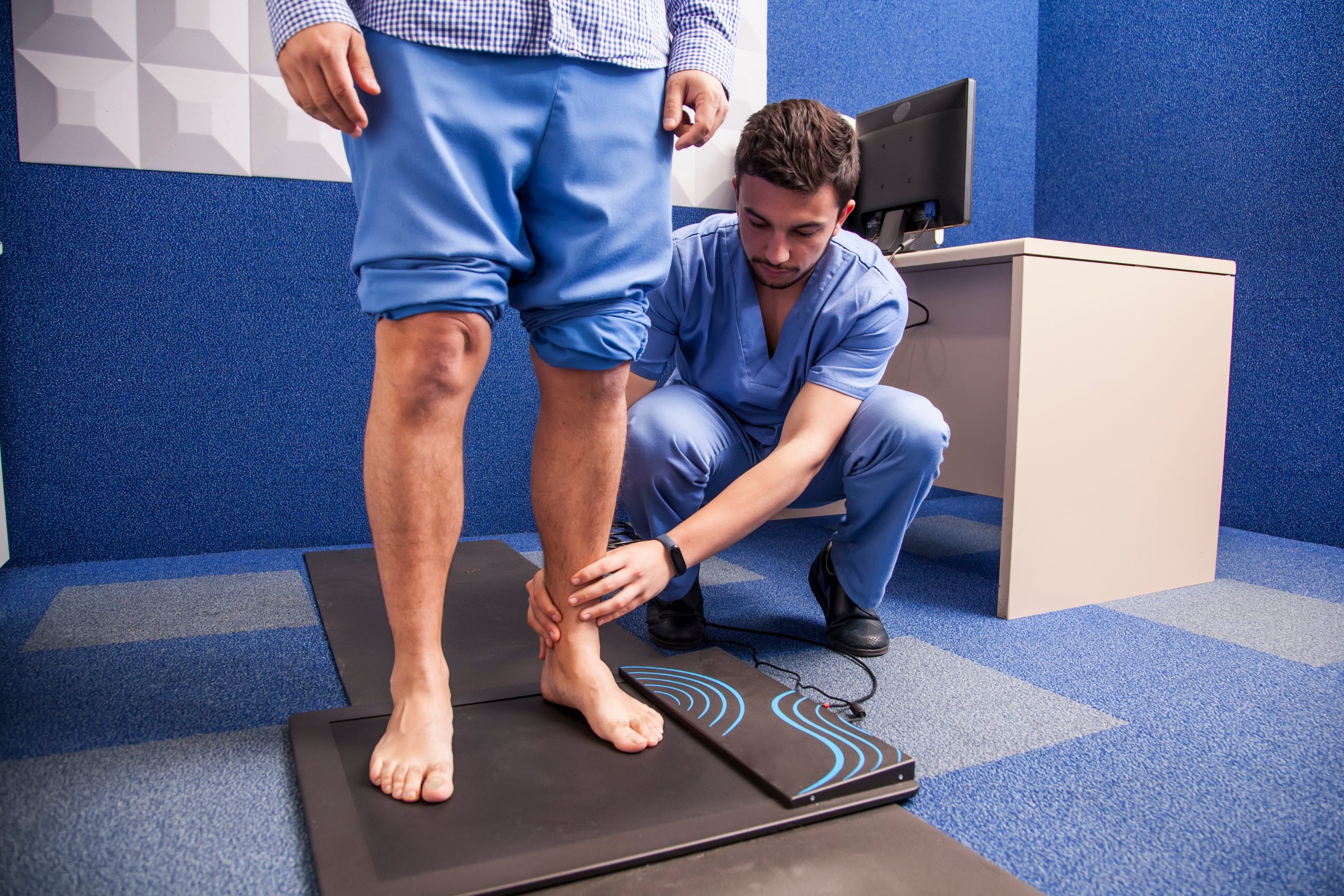Your gait is the way you move when you walk or run.
When we conduct a Gait Analysis, we use a scientifically developed method to analyse your walking or running style by observing the way you move and the impact of this movement on your feet, hips, lower back and limbs. This analysis provides us with a significant amount of information which in turn helps us understand the best course of treatment for foot, ankle, knee and hip pain.
The process of observing your gait helps us to determine overactive and underactive muscles to identify biomechanical problems which can lead to injuries or other problems.
This very useful process gives us valuable information about your form and movement flow, so that we can correctly advise you on recommended therapies, orthotics if necessary and strengthening or conditioning your feet so that they support you better.
We use Gait Analysis at Sanders Podiatry to help develop a treatment plan if you’re experiencing recurring foot pain – bunions, plantar strain, recurring calluses, or general hip and/or knee pain which may be associated with your foot biomechanics.
How is Gait Analysis done?
During a gait analysis, you’ll stand, walk and run. Our podiatrists will observe and analyse the movement of your feet and the effect this has on your body, so we observe your movement flow from your feet upwards. We use general visual observation to measure and record your movement and the impact this is has on your overall posture.
We can then diagnose your condition and confidently recommend a treatment plan with specific exercises to alleviate the pain or pressure you’re experiencing.
Related article: The 10 most common foot problems we treat in our podiatry clinics
What do we find during a Gait Analysis?
A gait analysis provides a significant amount of feedback about pressure or pain sources that stem from your style of walking.
For example:
Overpronation – about 70% of the population have feet that turn inwards, or overpronate. The feet arches collapse inwards which is also called flat feet. Overpronation can lead to arch pain, plantar fasciitis, stress fractures, lower back pain and general foot pain.
Underpronation – also called supination and less common and is the opposite of overpronation. It occurs when the feet have very high arches and turn outward. This places a great amount of strain on the lower leg when impacting the ground at this angle and can lead to shin splints and ankle strain among other things.
By analysing your gait, we’ll be able to determine the compensation your muscles are making to help you stay upright and moving.
We’ll also assess your glutes, hamstrings, quads and calves to so that we understand their effect and involvement in your movement. If they are overworking or underworking, this will cause strain in other parts of your body and we’ll be able to identify this during the gait analysis.
What will a Gait Analysis help with?
If you are experiencing any of the following conditions, we’ll conduct a Gait Analysis to identify the source of the problem.
- Forefoot pain or heel pain
- Plantar Fasciitis
- Achilles Tendinopathy
- Bunions
- Foot arch pain
We also specialise in young growing feet. Children’s feet are changing constantly as they grow and at times may need that little extra support to help them develop a strong and flexible posture that begins from the feet up.
We’ll assess their feet, their gait and provide a program of treatment for the various condition that children can experience in their feet.
Related article – The Most Common Foot Problems in Teenagers
Make an appointment with Sanders Podiatry – Linden Park, Stirling and Mt Barker
We provide general foot care, foot assessments, gait analysis and other diagnostics tools to help treat pain or discomfort arising from your gait. Our gentle and experienced team of family-friendly podiatrists work in our clinics at Linden Park, Stirling and Mount Barker.
Contact us on the following numbers to make an appointment:
Sander Podiatry Adelaide – 08 8379 1456 (Greenhill Podiatry)
